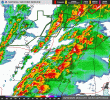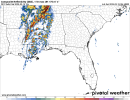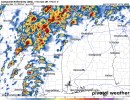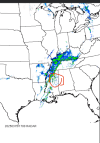For the northern areas, yes. If you watch Trey’s video though, the further south you went, the slower and almost stationary the boundary was.wasn't forcing a cold front (lol)? pretty strong even if it was a relatively weak cold front
However, the supercells and CI attempts that night in Louisiana and Mississippi seemed to be purely out in the open warm sector. Probably a combination of confluence and synoptic forcing from the glancing blow of the jet. The cap was stout down there so all but one of the storms was able to mature.




